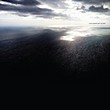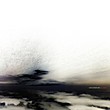|
|

Edvard Graham Lewis
The legendary Edvard Graham Lewis (AKA Graham Lewis, or E.G.Lewis, or E. Graham Lewis, or... there's a lot of combinations), bass-player from the legendary Wire (experimental art-punk-pop combo par excellence) is one of the few remaining innovators from the punk/post punk/new wave era of the late 1970s. Spanning nearly a 40-year long career Lewis still can come up with some unexpected stuff. He's been dealing with ambient noise and experimentalism pop-hybrids for many, many years, f.i. with the projects Dome (mainly back in the very early 1980s), Cupol (early 1980s as well), and Gilbert and Lewis (early 1980s) - all with Wire-bandmate Bruce Gilbert. Gilbert and Lewis has also worked as P'o (early 1980s, a project that also included Peter Price, David Tidball, and Alison Conway -- the latter better known as A.C. Marias), Lewis/Gilbert/Mills (including one Russell Mills, a visual and sound artist), and Duet Emmo (early 1980s, who saw Lewis and Gilbert team up with Mute-boss Daniel Miller). Lewis has been involved with numerous other projects as well: H-A-L-O (AKA H-A-L-O Lewis, in the mid-90s, with Örjan Örnkloo), OSCID (ca. 1999 and ongoing, alongside Jean-Louis Huhta and Carl Michael Von Hausswolff), Hox (who had a 1999-release, with Andreas Karperyd), and Where Everything Falls Out (ca. 2007, with Kenneth Cosimo and Anna Livia Löwendahl-Atomic/Ana Dinextra, collaborating with Lewis). Further, there were projects such as He Said Omala (ca. 1997, along with Andreas Karperyd and Mattias Tegnér), He Said 27#11 (2006, along with Markus Turnkey and Thomas Öberg - the latter of bob hund fame), plus Lewis' 'pure' solo project under the moniker: He Said (second half of the 80s). Now (well, late June that is), for the first time he has released recordings under his own name. In addition, for the occasion - while he was at it - he put out "a double", or "twin albums". Two albums at the same time, both launched this summer (June 23rd). The Austrian independent label Editions Mego Records released the pair (which, by the way makes Lewis a label-mate of his old and long-time friend Bruce Gilbert). Yes, Lewis for sure is a European artist. He is based in Uppsala, Sweden (has been for years, with his Swedish wife). All tracks were written and composed over a ten-year span (2003-2013), at the same time Lewis was working with All Under. And, just to underline Lewis' work across borders (both in Europe, as well as the rest of the world): According to the label '...several contributors collaborated at distance from LA, Japan, Scotland, Italy, Germany, UK and Sweden furthering this catchy excursion into the unstable grid of the 21st Century.' Graham once studied textiles (he later switched to fashion) in London, but he then formed Wire before he was could make a career from what he studied. Well, since the student days he's been busy working with sound texture(s), and he knows his musical trade by hand and by heart. In addition, he is a designer as well, and he is credited to both cover and inner images for his new albums. So, let us go all over, all under with Mr. Lewis. All Over is said to be '...a song based album that resides amongst the cracks between narrative and song, sound and music... [...] Cloaked in an atmosphere of beauty and paranoia' (Editions Mego). The platter holds 12 tracks spread over close to minutes of running time. And; spread over a wide spectre of musical angels and multiple genres - all within modern pop and rock. The short opener "Approaching Wheels" is a spoken word-piece crammed into an 'instrumental' outfit. If that sounds strange, the song sounds pretty normal, yet different. As more of the songs roll out the link to Wire, both of the newer era (ca. 1989/1990 and on, with traces of IBTABA (1989) and Manscape (1990), but also further through remix-album The Drill (1991) and The First Letter (1991 as well, but released as Wir -- since Robert Gotobed had left the group, they simply skipped the last letter) shines bright. Maybe even up to recent years' Red Barked Tree (from 2012, now with Robert Grey, AKA Robert Gotobed back on the team, on the drum-stool. But without Bruce Gilbert who left Wire/Wir in 2004) as well as almost as far back to the days of 154. However, slightly, only slightly. Hints from 154 are vague (you'd better add some electronic seasoning while you are spinning it, to compare themes and threads). All the Wire records aside, this is (obviously) music created by someone from the Wire camp. Like Editions Mego says: '...conjures the spirit of Wire's experimental pop trajectory whilst simultaneously exploring a multitude of sonic possibilities. Gritty mechanical operations support Lewis' wry human observations in a uniquely disturbing melange of punk, industrial, techno and pop.' And further: 'A dream logic plays throughout 'All Over' courtesy of Lewis' odd lyrical content being set with all manner of disorientating sound and rhythm.' All Over is a varied and thrilling record, but it sees Lewis still being a player to be reckoned with. Check out songs like "Bluebird", "Straight Into The Corner", "We've Lost Your Mind", the pulsating "Quick Skin", the bass-driven "Where's The Affen?", or "Twins Got Got". By judging the sounds and playfulness of All Over, it seems Lewis should have collaborated, or worked with Brian Eno before they both retire (Eno's only 5 years older than Lewis - they are both still young at heart and mind). Think of it, gents. Well, contributors to (some names have been working with Lewis earlier on) All Over count: Andreas Karperyd (electronics), howardAmb (a duo, counting James H. Hamblin and Stefan Scott Nelson), P.T.Kirk (AKA Akatombo, on additional electronics) Linda Dahl (vocal), Jim Ascoft (vocal) and Fabrizio Clemenza and Giovanni Romano. Like Mego states 'All Over is a major amalgamation of music, media, man and mind.' All Under is - of course - the companion release to All Over. It compiles soundtracks to films and/or installations (the tracks "All Under (Film Score)" and "All Under (Installation Loop)" were composed for the film and three-screen video installation by artist/director Gunilla Leander), and a self-penned short story. The short film All Under was made in 2003, the installation of the same title was presented for the first time in 2005 (in Stockholm). The album holds 4 longer tracks -- well, two clocks in at less than 6 minutes, one stops at 10 minutes (the installation loop track), while the closing track ("No Show Godot") stretch out over 18 minutes. The songs are the aforementioned "All Under" tracks, respectively the "Film Score" and the "Installation Loop", plus "The Eel Wheeled" and "No Show Godot". All this makes a more abstract, more challenging album. This is a record harder to get into than its twin/companion, which is a more 'regular' song-and-album formatted platter. All Under is more an instrumental recording, except the spoken-wordish noir-dystopia story (a bizarre short story) of "The Eel Wheeled". The score to Leander's short film was improvised in real time with use of a sampler and FX processing, everything recorded on to mini disc. Both the 'score piece' and the 'installation piece' are somewhat noisy sound-wave crawl of the looped and effected kind, which means they probably works better accompanied by the images they're created to fit/to match. The epic "No Show Godot" (said to be 'a soundtrack to a "sky movie"' - Editions Mego) twists and turns between monotonous electronic streams and patterns, to a part where added vocals and a slow, cool and chilling rhythm one third into the song. Some minutes later the track slowly grows and revolves in intensity and 'weight', and it keeps steamrolling and spiralling till, or towards its end. It is a monstrous beat with a massive, threatening soundscape coming at you. Until it fades into the shadows. Is this some sort of an absurdist tragi-comedy as Beckett's play, Waiting for Godot. With one Vladimir and one Estragon waiting endlessly (in vain) for the arrival of a character named Godot. Are we, the listeners, the Vladimirs and Estragons? In addition, is Lewis, the composer, the Godot we are awaiting? Alternatively, simply, is the song's 'plot', or maybe its sound itself the Godot? Or, maybe there is no Godot, or plot, after all. Is this song just a long wait for nothing to come or happen? Well, the track itself happens, so there is a movement rolling and coming. There is a beginning, a middle part, and an end. But, maybe not - to quote film director Claude Chabrol: 'A story should have a beginning, a middle and an end, but not necessarily in that order.' Contributors/collaborator have been: bob hund's Thomas Öberg (who has re-mixed "The Eel Wheeled" version. Öberg also took part in the He Said 27#11 project), plus Pauline Svanerö (vocals) and, again, P.T.Kirk, AKA Akatombo (additional drones). On the film and installation scores, Editions Mego says: 'The results are a viscous ambience of swirls, feedback and distortion.' Hyper-tense, ambient electro-techno, one might call it. For both All Over and All Under, all vocals and instruments were recorded and produced by Lewis himself at Tip Top Studio, Uppsala, Sweden during 2003-13. Editions Mego say: 'Lewis has developed an exceptional voice with ceaseless exploration of a wide variety of musical forms'. Copyright © 2014 Håvard Oppøyen
|
| © 2014 Luna Kafé |
